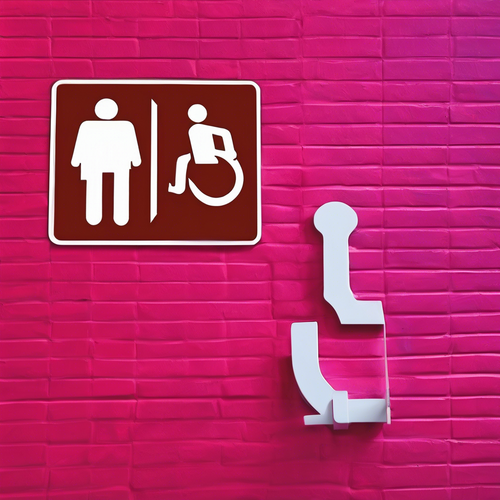Accessibility Matters: Ensuring Everyone Can Comfortably Use Your Miami Restroom Facilities
In a bustling city like Miami, the need for accessible restroom facilities is not just a matter of convenience; it’s a fundamental right. As our population becomes increasingly diverse, ensuring that every individual—from the elderly to those with disabilities—can comfortably access and use public restrooms has taken on critical importance. It’s time for businesses and public institutions to embrace comprehensive accessibility measures that create welcoming environments for all. 🚻
The concept of accessibility extends beyond mere compliance with the Americans with Disabilities Act (ADA). While legal mandates serve as a guideline, true accessibility involves thoughtful consideration of various user experiences and the incorporation of inclusive design principles. According to recent studies, approximately 1 in 4 adults in the U.S. lives with a disability, meaning that restroom facilities must adapt to a burgeoning demographic that requires consideration and respect. 🔍
The Current State of Accessibility in Miami’s Restrooms
Miami’s vibrant culture is an asset, but inadequate restroom facilities can detract from the experience of residents and tourists alike. Many public restrooms still fall short of meeting accessibility standards, leading to potential embarrassment and health issues for those affected. Common complaints include:
- Lack of Space: Insufficient room for wheelchair maneuverability is a primary barrier for accessible restrooms.
- Poor Signage: Lack of clear signage indicating accessible facilities can lead to confusion and frustration, especially in crowded venues.
- Inadequate Support Features: Missing grab bars, improperly placed soap dispensers, and non-accessible faucets can make basic hygiene tasks daunting for some users.
Understanding Accessibility Features and Compliance 🛠️
When designing or renovating restroom facilities, compliance with the ADA is a vital first step. However, integrating additional best practices can enhance user experience significantly:
- Clear Pathways: Ensure that pathways leading to and within restrooms are unobstructed and wide enough for wheelchair access.
- Adaptive Fixtures: Install toilets, sinks, and urinals that are accessible to all. For example, toilets should have a height between 17 to 19 inches for easier transfers.
- Grab Bars: Strategically placed grab bars should support individuals with mobility issues, offering stability where it’s most needed.
- Automatic Doors: Consider installing automatic doors for easy access. If manual doors are used, handles should be placed at an accessible height.
“Accessibility is not just about meeting legal requirements; it’s about fostering a culture of inclusivity that considers each person’s dignity and needs,” states Linda Davis, an accessibility consultant.
Incorporating Universal Design Principles 🌍
To truly achieve accessibility, facilities should consider universal design principles, which advocate for spaces that are inherently usable by all people, regardless of ability or age. This philosophy benefits everyone—not just those with disabilities:
- Visual and Auditory Aids: Incorporate tactile guidance for the visually impaired and auditory signals for navigation in larger facilities.
- Inclusive Designs: Consider family restrooms that accommodate caregivers, children, and individuals with disabilities, offering more space and support options.
- Convenient Location: Ensure accessible restrooms are in easily recognizable, central locations near entrances and common areas.
Community Feedback and Continuous Improvement 🗣️
Engaging the community in discussions around restroom accessibility is vital for ongoing improvements. Conduct surveys or hold open forums allowing people to share their experiences and suggestions. Accessibility advocates, local disability organizations, and users themselves can provide invaluable perspectives that highlight areas needing attention. Listening to these voices not only enhances facilities but builds trust within the community. 🏙️
Conclusion: A Collective Responsibility 🤝
Creating accessible restroom facilities in Miami is not merely about compliance; it’s a moral obligation. Society is enriched when all members can participate fully without facing additional barriers. Business owners, city planners, and public administrators must work collaboratively to ensure that accessibility becomes a standard practice, not an afterthought. Investing in inclusive restroom facilities sends a strong message: everyone deserves respect and dignity in every aspect of their public life. Together, we can ensure that Miami is a place where everyone belongs—starting with our restrooms.
